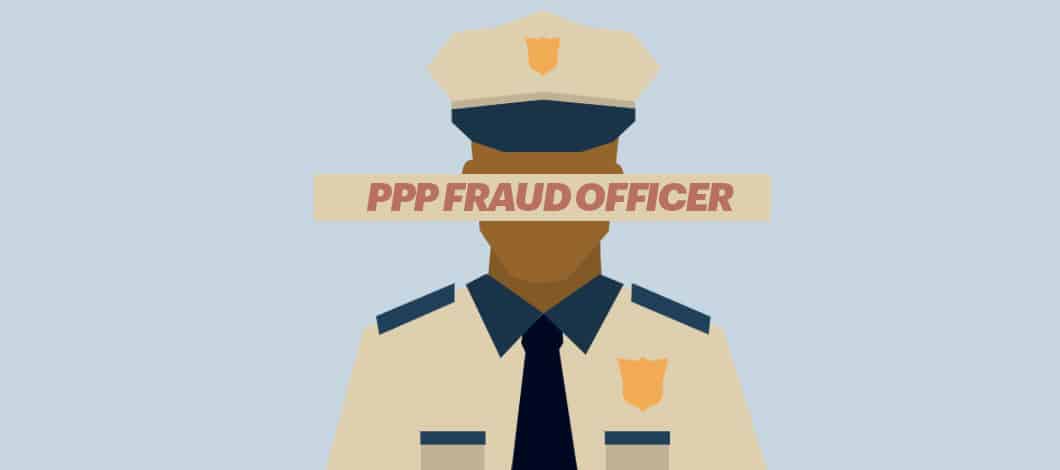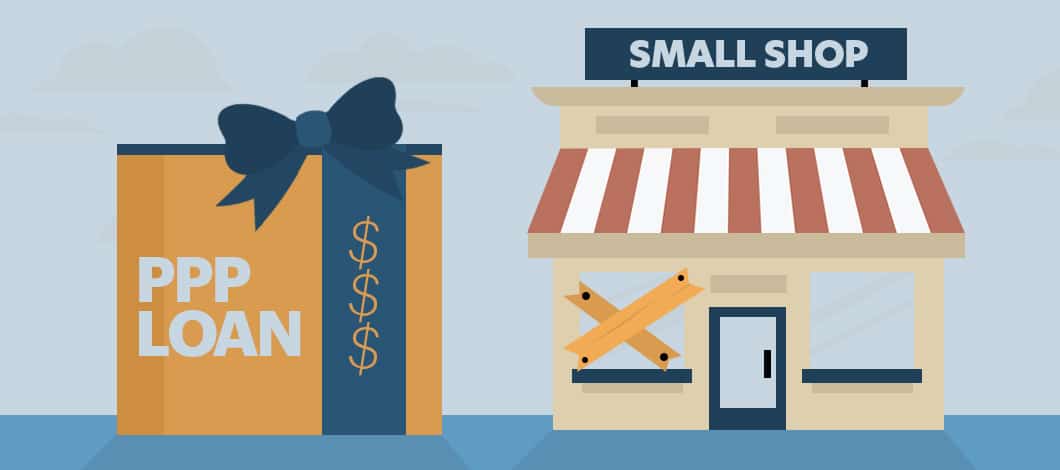The Paycheck Protection Program (PPP), the U.S. government’s financial carrot to help small businesses keep their employees on the payroll amid the pandemic, has become a target for scam artists.
Learn how PPP fraud affects legitimate borrowers.
How PPP Loans Work
PPP is a special Small Business Administration (SBA) program designed to help small businesses affected by the coronavirus pandemic continue to afford paying workers without going out of business.
The program includes 2 separate types of SBA loans:
- First Draw PPP Loans of up to $10 million, available to qualifying small businesses which haven’t yet received a PPP loan
- Second Draw PPP Loans of up to $2 million, available to qualifying small businesses that have received a First Draw PPP Loan
Both First Draw and Second Draw PPP loans are eligible for forgiveness provided qualifying criteria are met. Conditions for forgiveness include spending all PPP funds exclusively on payroll and other authorized expenses, with at least 60% of funds going toward payroll. Fraud can occur when applicants apply for forgiveness without meeting these conditions.
The program has been extended to run through May 31, 2021.
Qualification Restrictions for PPP Loans
To qualify for PPP loans, applicants must meet certain criteria. Fraud can occur when applicants who do not meet these criteria apply for loans.
For First Draw PPP Loans, applicants must fall into one of several qualifying categories, which include sole proprietors, companies that meet industry-based size specifications set by the SBA, or hotel and restaurant businesses with multiple locations employing up to 500 per location.
To qualify for a Second Draw PPP Loan, applicants must have spent a First Draw PPP Loan on legitimate uses, must employ up to 300 employees and must be able to document a reduction in gross receipts of at least 25% between equivalent quarters from 2019 to 2020
Legitimate Uses of PPP Funds
PPP loan funds may only be used for specific purposes consistent with the program’s intent of helping small businesses affected by the pandemic continue covering the cost of paying employees.
First Draw PPP Loans and Second Draw PPP Loans only can be used to cover the following categories of expenses:
- Payroll costs, including benefits
- Mortgage interest, rent, utilities and safety measures to protect workers from COVID-19
- Costs for uninsured property damaged by vandalism or looting in 2020
- Certain operational expenses and supplier costs
Use of PPP funds for purposes other than these isn’t authorized and may result in ineligibility for loan forgiveness or, in some cases, legal action.
Why PPP Loans Are Vulnerable to Scams
In September 2020, the House Select Subcommittee on the Coronavirus Crisis released a preliminary analysis on PPP fraud, waste and abuse. The report found that billions of dollars had been misused, and sought to identify the causes and develop solutions.
The subcommittee identified the PPP program’s auditing policy as one of the key factors underlying fraud. The Treasury Department had previously said it would audit all PPP loans of more than $2 million, but would normally assume that borrowers of lesser amounts have acted in good faith. Review of loans in lesser amounts are left to the discretion of the SBA, which can elect to conduct an audit upon request from an SBA employee or a party outside the SBA, such as a lender.
Under this auditing policy, fraud involving PPP loans of less than$2 million tends to slip under the radar. The subcommittee’s review found that in 10,856 cases involving borrowers receiving multiple PPP loans, 65 would have been reviewed automatically for being more than $2 million.
Auditing wasn’t the only problem the subcommittee identified. Findings indicated the SBA and Treasury Department may not have used publicly available data to confirm the information on applications. For instance, hundreds of loans were approved even though they were missing key information such as names and addresses. Hundreds of additional loans went to borrowers who should have been disqualified because they had been flagged by the federal government as ineligible to do contracting work.
Common PPP SBA Loan Scams
SBA loan scams fall into a few major categories:
- Some individuals and groups provide fraudulent information on loan applications, such as false contact information or exaggerated payroll expense claims
- Some borrowers misspend loan funds on private expenses
- In some cases, organized criminal groups use money-laundering techniques such as submitting the same loan application in the name of multiple shell companies
The most common abuse of the PPP program involves spending loan funds on personal luxury items such as new homes, cars and jewelry, according to the Department of Justice.
What Authorities Are Doing Do Combat PPP Scams
To combat PPP fraud, the House report recommended several steps:
- Improving SBA and Treasury Department review of loan forgiveness applications by comparing applications with public databases and flagging those with suspicious activity, such as duplicate borrower information
- Expanding the scope of auditing beyond the $2 million threshold by doing risk-based auditing and random sampling
- Improving cooperation between the SBA and oversight partners such as Congress, Inspectors General
To support these measures, the Justice Department has stepped up its prosecution of SBA fraud cases involving misuse of PPP funds. As of the end of March 2021, the Justice Department Criminal Division’s fraud section had brought cases against at least 120 defendants accused of PPP fraud.
For example, earlier in March, authorities followed up 4 PPP fraud arrests made last year with the arrest of 3 additional suspects accused of conspiring with an alleged fraud ring operating out of California’s San Fernando Valley. The Department of Justice asks that anyone with information about fraud related to COVID-19 contact the National Center for Disaster Fraud (NCDF) Hotline at 866-720-5721 or submit an NCDF Web Complaint Form.

How PPP Investigations Can Affect Legitimate Borrowers
While law enforcement’s efforts are directed at fraudulent loan applicants, legitimate borrowers may face some inconveniences as a side effect:
- Loan processing may be delayed as lenders and the SBA implement more rigorous verification of application information
- Expansion of auditing scrutiny may make applications for loans and loan forgiveness more likely to be flagged for auditing
- If you have accidentally made a mistake in filling out information on your application, such as using a home address where you should have used a business address, your application may draw additional scrutiny
These consequences may cause inconvenience for some borrowers.
Can SBA Loan Fraud Spell Jail Time?
Yes, if someone has provided fraudulent information on a loan application or spent loan funds on personal expenses, they can face criminal penalties. They also may become ineligible for loan forgiveness and be forced to pay back what they borrowed.
However, if they provided accurate information on your application and spent your loan funds properly, they shouldn’t be worried.
How to Avoid Problems With PPP Loans
Legitimate borrowers can take several steps to avoid getting embroiled in a PPP fraud investigation:
- Verify the accuracy of all information provided on loan applications and loan forgiveness applications, including contact information, payroll amounts and accounts of PPP fund spending
- Make sure all required fields are filled out and not left blank
- Be careful not to use the wrong contact information on an application, such as using a personal name or address where you should be using a business one
- Don’t apply for more than one First Draw PPP Loan or one Second Draw PPP Loan
- Only spend PPP funds on authorized expenses
- Spend at least 60% of funds on payroll
- Keep all loan application documentation
- Maintain records of all expenditures of PPP funds and all payroll expenses
For more information on what records you should maintain, see our guide to preparing for a PPP loan audit.
Follow Proper PPP Procedures to Avoid Getting Flagged
The most common types of PPP fraud include applications from ineligible individuals, misuse of funds and organized criminal money laundering. If you are a legitimate applicant, you can avoid getting flagged for these types of fraud by following proper procedures for filing PPP applications and spending PPP funds.
Even if your loan is legitimate, you may still be audited if your loan is more than $2 million or if your lender, the SBA or other authorities have questions about your case. The best way to be prepared for an audit is to make sure you keep all relevant documentation.
Your lender can help walk you through the application process to make sure you follow proper procedures, reducing your odds of being investigated or audited. If you’re considering a PPP loan or other business loan, take a few minutes to fill out our free application and find out which loan options you prequalify for.











